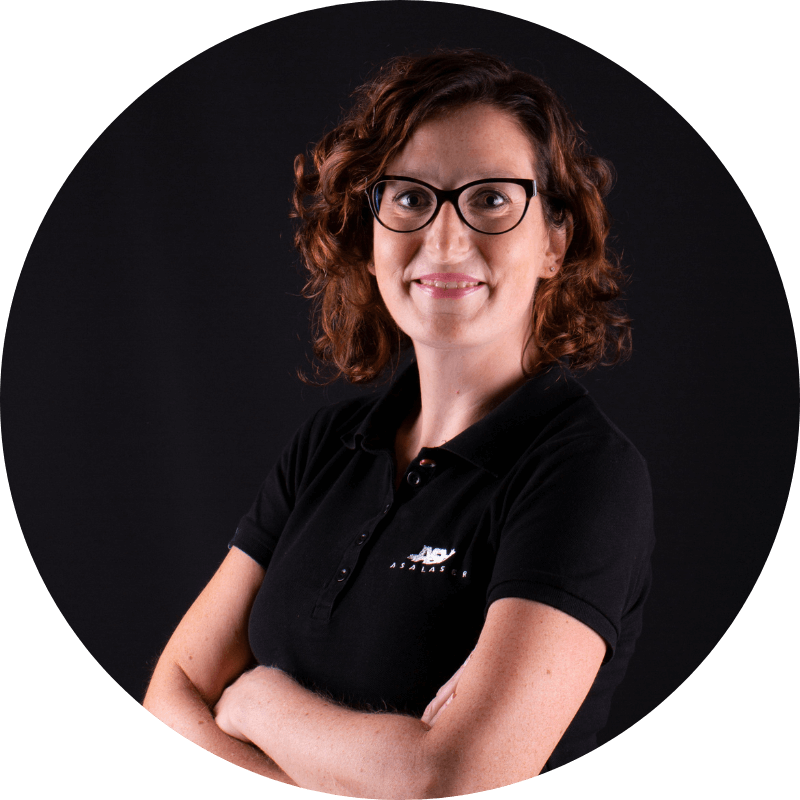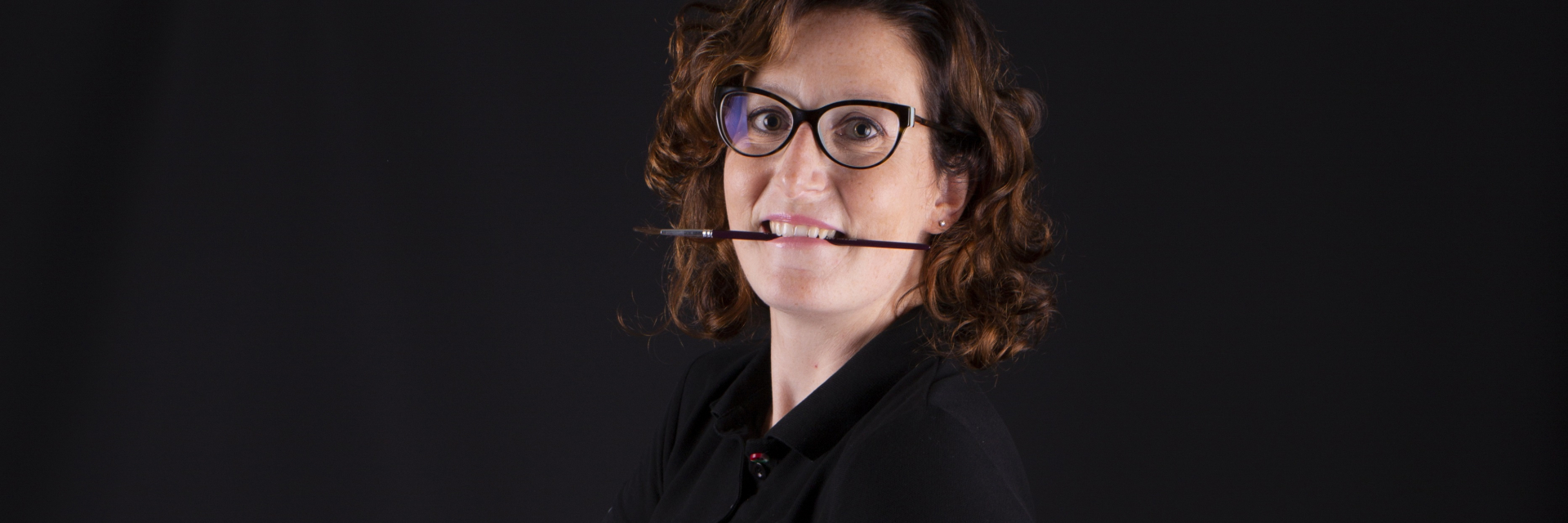Among the various ASA devices that also bear your signature, which one are you most fond of?
There isn’t just one, but there are many; I have a special bond with the family of systems for the application of MLS® Laser Therapy. It could be because this therapy is entirely “made in ASA” and its evolution has accompanied me since my debut at the company. The device that I have close to my heart, however, is M-Hi, which we will present at Medica 2023 and which is the result of the professional maturity I have achieved. This maturity has allowed me to have an active role at different times and in different areas of its design, development and presentation.
The Biomedical Engineer with a fad for Problem Solving: Silvia Vitulo
Silvia Vitulo has contributed to the design, development and production of every ASA device. Silvia, a biomedical engineer and an ASA Product Specialist, is at the forefront of the process that leads to the creation of each new system.
"The process includes various phases, for which the specific skills of specialised professionals are rallied and, by working together, they are able to achieve a result of great value". This value is expressed in the creation of an effective partnership between technology, scientific research and business.
“These three cornerstones are the premise from which new products are developed, the production of which cannot, however, leave out an initial analysis of the market and of consumer needs. The ability to anticipate needs is of the utmost importance, not only to be at the forefront in terms of solutions offered, but also to remain competitive”.
The process that leads to the manufacture of a new device follows a specific "protocol", consisting of a series of methodical steps, entrusted to highly specialised figures.
The phases included in the creation of a product are indeed standardised and divided into steps that proceed in parallel or in sequence. Specifically, after defining the general system requirements, which represent the first input to be sent to the Research and Development division, the hardware and software specifications are defined and the first mechanical, electronic, software and concept design work is implemented. The next step consists in getting deeper into the heart of the project, perfecting the detailed specifications and the technical solutions that meet them.
This is followed by the prototype phase of the parts that will make up the device, which will also allow for the first tests to be carried out. What is the value of this design phase?
This step represents the first important litmus test to check that things are going as planned and also to verify the usability of the system. This is crucial to ensure that the product is well received by the market. In fact, the verification and validation phase documents that all design requirements have been met and marks the end of the design phase. However, engineering is just as important, as it allows for the optimisation of the different production phases, making them efficient in terms of time, cost and resources used. The pre-series phase is important too: giving shape to a limited number of parts and devices allows for the quality and reliability of the suppliers to be evaluated and provides an overall view to all the company departments that will be involved in the next steps, according to their area of competence. Finally, the design transfer to production indicates the official start of series production.

If the manufacturing process is a standard process, what is the “x” factor for it to bear the ASA imprimatur?
The difference is in the method used for its creation, the highly specialised figures involved in its development, the meticulous attention to detail, the identifying design that can be created and, last but not least, the ability to imagine its use by the end user, in order to produce a device that is truly “user-friendly” and easy to use. ASA’s signature can be read in all this.
Yours is a transversal role, which interfaces with different company departments. In addition to the more technical division of the company, your interlocutors are also sales and marketing...In my role, I have the privilege of being able to confront with different areas, coming into contact with topics and issues specific to other departments. This is an advantage because it allows me to take inspiration and gather useful information to open up to new visions and planning abilities. But it also provides me with a strong incentive to continue to work with enthusiasm and practicality, which is useful when it comes to using the correct approach to tackle problems.
In fact, my passions, supported by a natural predisposition, remain the management of critical issues and their resolution.
In addition to being transversal, your role has a traditionally male vocation...
Over the past few years, the number of women who have begun to work in my field has grown: this is a good sign to overcome a gender gap that has no reason to exist. In fact, the female contribution can represent an important added value in different directions, such as attention to detail, organisation of flows and the natural sensitivity to understanding the end user’s ultimate needs.








